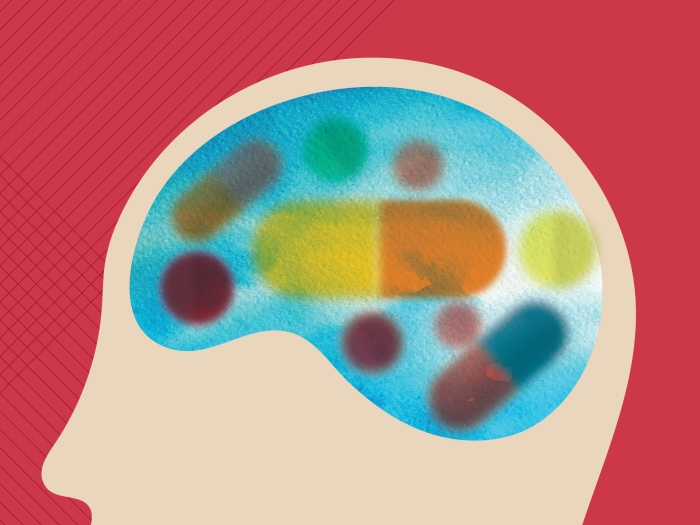A movement disorder specialist explains the hallmark signs of Parkinson’s disease as well as the non-movement symptoms associated with the condition.
7:00 AM
Author |

Parkinson's disease is a chronic, progressive illness, meaning over time people with Parkinson's will develop new symptoms.
MORE FROM MICHIGAN: Sign up for our weekly newsletter
This is why recognizing symptoms — and communicating them to a Parkinson's care team — can help patients find relief as symptoms change. Here's what patients, in many stages of the disease, should look for.
Parkinson's 101
First, the basics: Parkinson's disease is primarily caused by low and falling dopamine levels. Only 10 to 15 percent of Parkinson's cases run in families. We don't know what causes the vast majority of cases. We think Parkinson's is caused by a combination of people being predisposed to it by their DNA and coming into contact with some kind of environmental factor, such as an infection or a toxin. A lot of research is going into this area.
Parkinson's disease is a clinical diagnosis, meaning it must be made by a physician and not by tests. Parkinson's can be difficult to diagnose, but movement disorder specialists typically know what to look for in the patient's history and medical exam.
Diagnosing Parkinson's
When doing a medical exam, we pay close attention to how the person moves, looking for the following:
-
Bradykinesia (slowness and smallness of movements) — the hallmark feature of Parkinson's.
-
Stiffness or rigidity. We detect this by passively moving the patient's joints during a medical exam. Patients with Parkinson's are often very stiff in their arms, legs or neck.
-
Tremors at rest. These tremors come out when people are not paying attention or are distracted, so a good time to observe this is when someone is walking.
There are no biomarkers (tests or measures) available to diagnose this condition. Imaging and lab tests are not needed unless we suspect there may be another cause for the patient's symptoms.
Watch Dr. Wyant's talk from the University of Michigan's 2016 Parkinson's & You Symposium. It includes Parkinson's disease definition, symptoms, treatments and more.
Non-motor symptoms also at work
Parkinson's disease affects every part of the body, so it goes beyond these movement markers.
Symptoms that are commonly reported include: changes in memory and cognition, problems sleeping, mood symptoms such as anxiety and depression, or even hallucinations. The autonomic nervous system is often affected in patients with Parkinson's disease. This is the unconscious control system that regulates functions such as the heart rate, digestion, respiratory rate, pupillary response, urination and sexual arousal.
Here are details and treatment options for some of these non-motor signs that may be related to Parkinson's:
Cardiovascular symptoms
Orthostatic hypotension: This is a lightheaded or dizzy sensation usually triggered by a change in position. It can lead to increased falls. Nonpharmacologic ways to help include:
-
Changing positions slowly and employing physical countermaneuvers to prevent fainting (syncope).
-
Increasing daily intake of water to more than four water bottles a day and salt intake to more than 8 grams per day.
-
Eating small, frequent meals.
-
Wearing compression stockings and abdominal binders.
-
Sleeping with the bed in the head-up position.
Pharmacologic ways to help include:
-
Several older medications, including fludrocortisone, midodrine and pyridostigmine, can be effective but have not been specifically studied in patients with Parkinson's.
-
Droxidopa: a new medication approved for treatment of neurogenic orthostatic hypotension (NOH) in patients with Parkinson's.
Gastrointestinal symptoms
Constipation: This causes abdominal discomfort and can provoke fainting with concurrent cardiovascular problems. Treatment options include:
-
Eating a high-fiber diet, with increased fluid intake and psyllium supplements.
-
Using an over-the-counter stool softener or gentle laxative.
-
Trying polyethylene glycol (MiraLAX).
SEE ALSO: Deep Brain Stimulation for Parkinson's Disease: Is It Right for You?
Gastroparesis: This is a slow emptying of the stomach. It leads to problems with inconsistent medication absorption, nausea and vomiting, early sensation of fullness, weight loss and malnutrition.
-
To help, eat small, frequent meals and exercise.
-
Medical options are available, but in some cases they can lead to worsening Parkinsonism.
Drooling (sialorrhea) symptoms
Fixes for this symptom can include:
-
Trying to chew gum.
-
Glycopyrrolate, an oral medication that has been shown to be beneficial for short-term treatment.
-
Botox injections into the salivary glands, which have been shown to be safe and effective.
Reproductive and urinary system symptoms
Erectile dysfunction: Sildenafil (Viagra) does have some evidence to show that it can be useful in patients with Parkinson's, but it should be used cautiously.
-
If you already have lightheadedness and dizziness when you stand up, this might not be the drug for you. If you have problems with your heart, you should see a cardiologist before you use this medication.
Problems urinating: This can include issues with frequency (having to go all the time), urgency (needing to go as soon as the urge is present) and incontinence (inability to hold urine).
-
Multiple drugs (such as Vesicare and Ditropan) are available for these symptoms.
-
Other options include behavioral modification and intravesical (into the bladder) Botox injections.
It's important to realize that these non-movement symptoms are related to your Parkinson's, and you should talk about them with your neurologist. Sometimes symptom relief is just a matter of sharing what's bothering you.

Explore a variety of health care news & stories by visiting the Health Lab home page for more articles.

Department of Communication at Michigan Medicine
Want top health & research news weekly? Sign up for Health Lab’s newsletters today!





